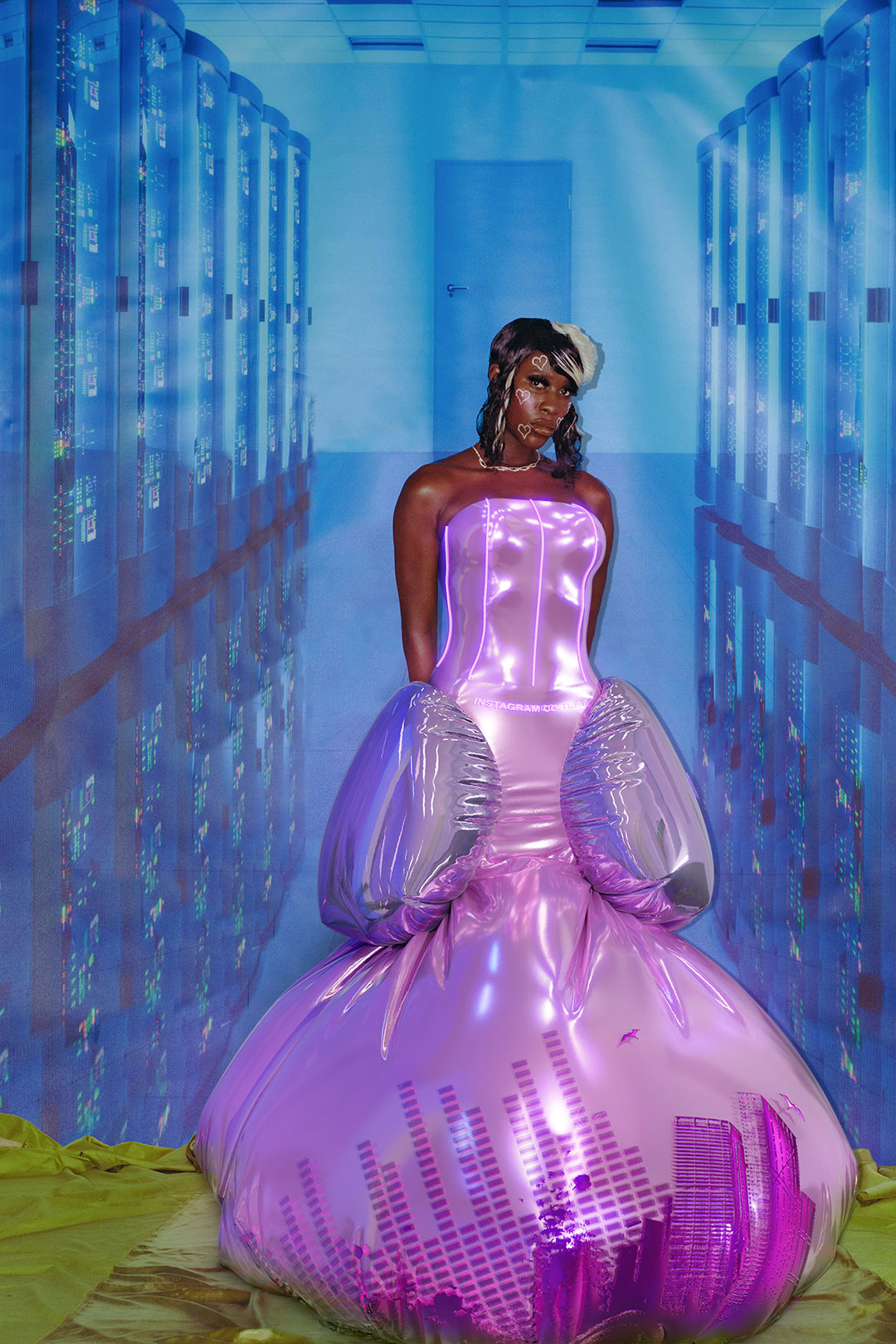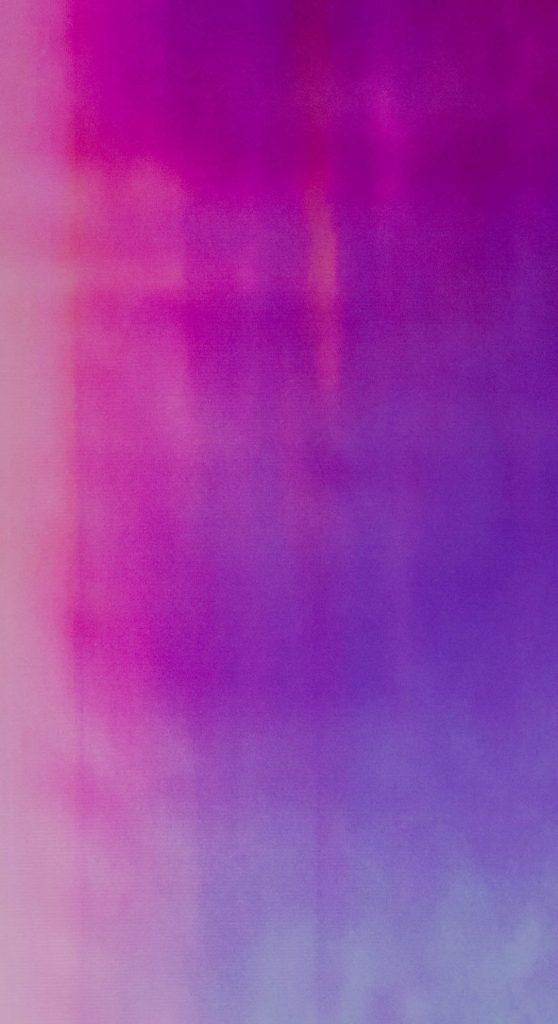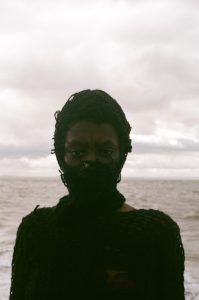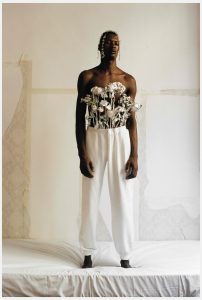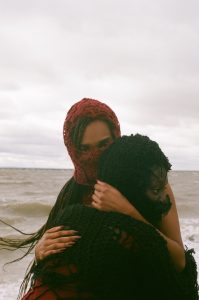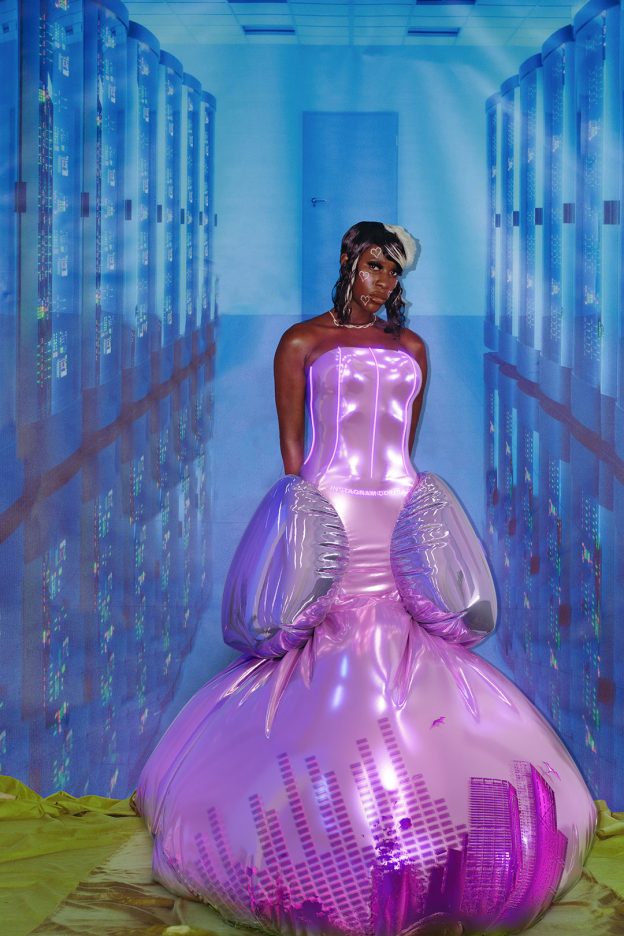
fashion editorial with photographer
TERNA JOGO
What makes someone or something real? What are the rules binding reality, and where do we locate the boundaries between reality and digital-ity? Is there a point where human reality evaporates into the ether of the virtual—a point where we become too much internet and not enough “real person”? Where is the vanishing point for humanity?
Keeping it real becomes an everyday interrogation: Am I still real if I use a filter on my face on insta? Give myself a bigger ass and edit away my belly on Photoshop? Use an avatar online—a stand-in, a picture of my perfect self? Did that album really go number one if most of the streams were playing to absolutely no one in an empty data farm? Are these clothes you see pictured here—clothes you will never touch the fabric of and can only wear once, digitally—real? Or are we really naked out here? Do we need saving from the internet? Would you wear digital fashion, and if so, how?
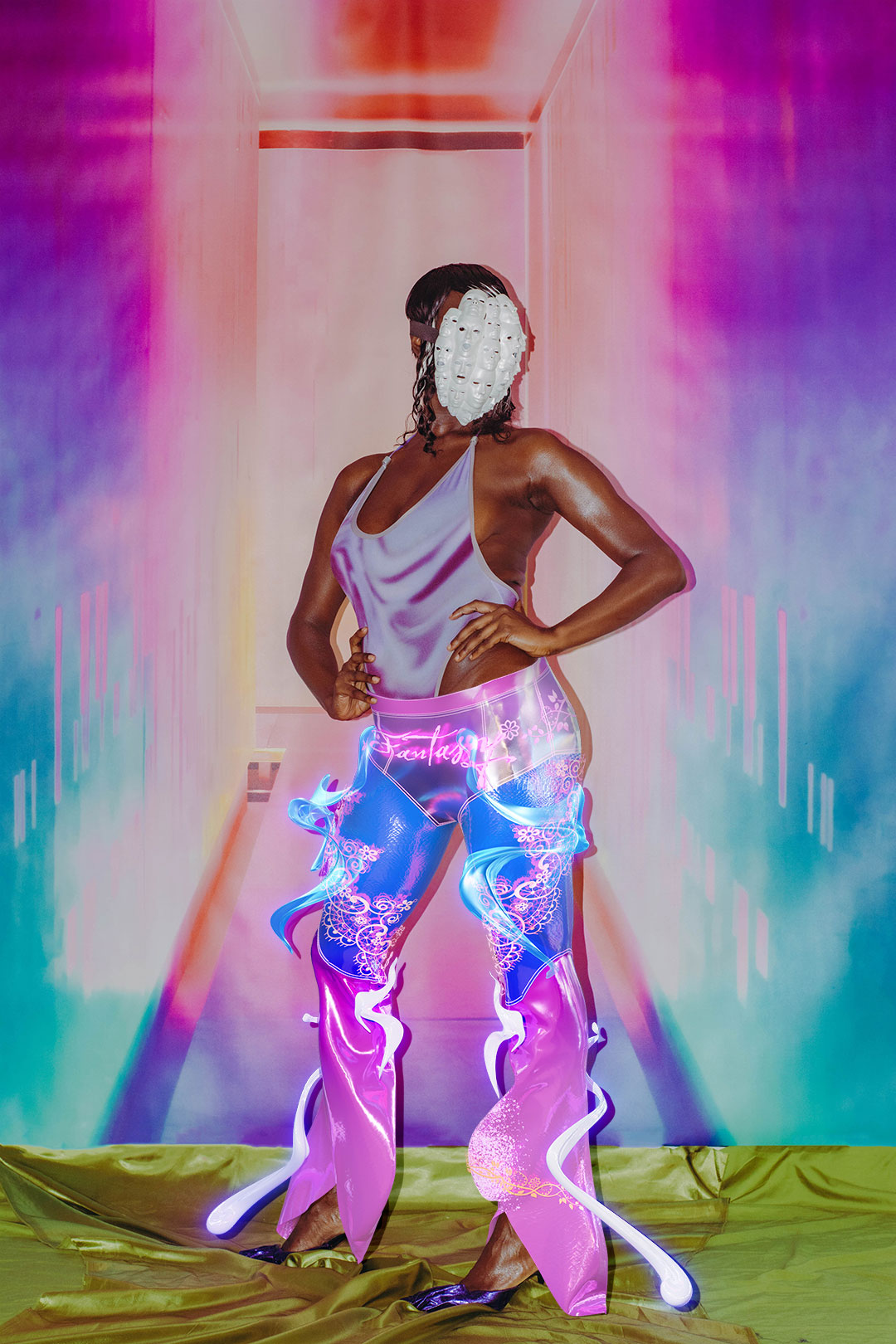
Cover image: MG C dress by Tribute Brand. Necklace stylist’s own. Above: Mask by Stella Marbles. Bodysuit & handmade shoes by Louise Jarrige. SRNA pants by Tribute Brand.
The internet is fast, it sells us itself as cool and sexy, as the place where you can get everything, see everything, be anything. But the actual, in reality infrastructure, is clunky: material spaces that we don’t think about—aisles of data servers stored in huge warehouses, guarded, hidden from sight, and sucking up sea water to keep them cool. Massive pipes submerged in the Atlantic Ocean, more pipes on the sand in Cornwall. Even these images that you see here took over three months to materialize, months longer than expected, especially given the extreme digitization of all parts of the shoot: the photographs, the clothes. But after a series of glitches, a series of collisions between the human and the digital, a failed digital experiment, originally intended for our last issue, ETHER, these are the photographs that could be salvaged. The rest will forever remain in the truly virtual space of the imagination.
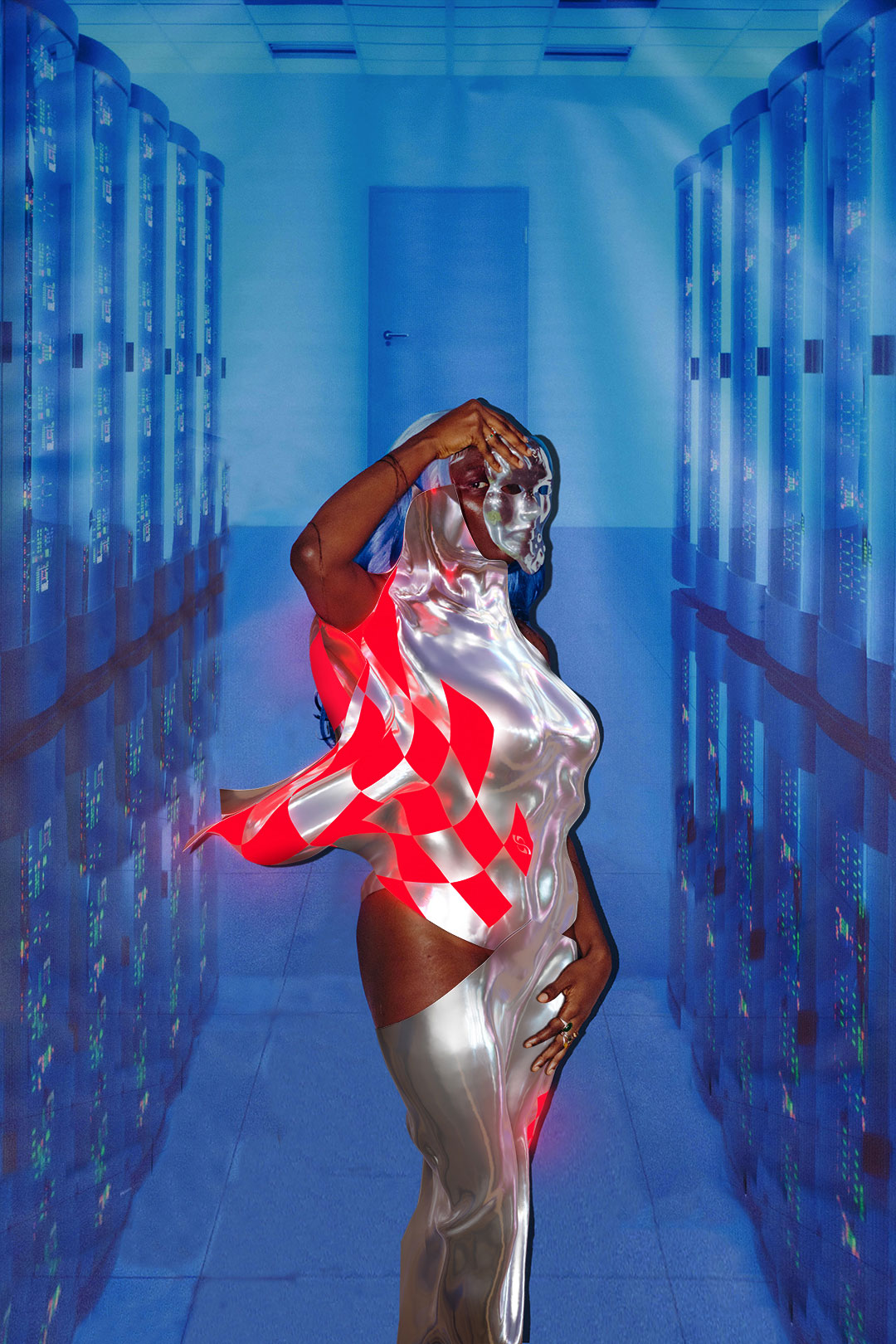
Mask by Stella Marbles. REPKA dress by Tribute Brand. Rings stylist’s own.
So, the internet can suck too, metaphorically and literally as it sucks up sea water and energy and time. And then there is us, all of us, feeding the internet with our own personal essence, making it run, making it rich. We upload ourselves and manifest on physical screens in material places that we can’t see and may not know. Our irl bodies act physically, interacting with the digital, with the screen, unwittingly making us more virtualized and immaterial as they go.
So, how to stay “real”? And anyway, is being real even important? Or is the real in the glitch, the failure, and what we salvage from it? Or should we perhaps relax and accept what increased digital-ity might be showing us: first, that when machine and human mix, things won’t always go according to plan, and the best you can do is save what you can. And second, that a lot of very significant “real” things are also constructed: things we imagine. Like race, gender, money, presidents, deadlines, Zoom meetings, text threads, social media feeds—things that were imagined so hard they became our lived realities.
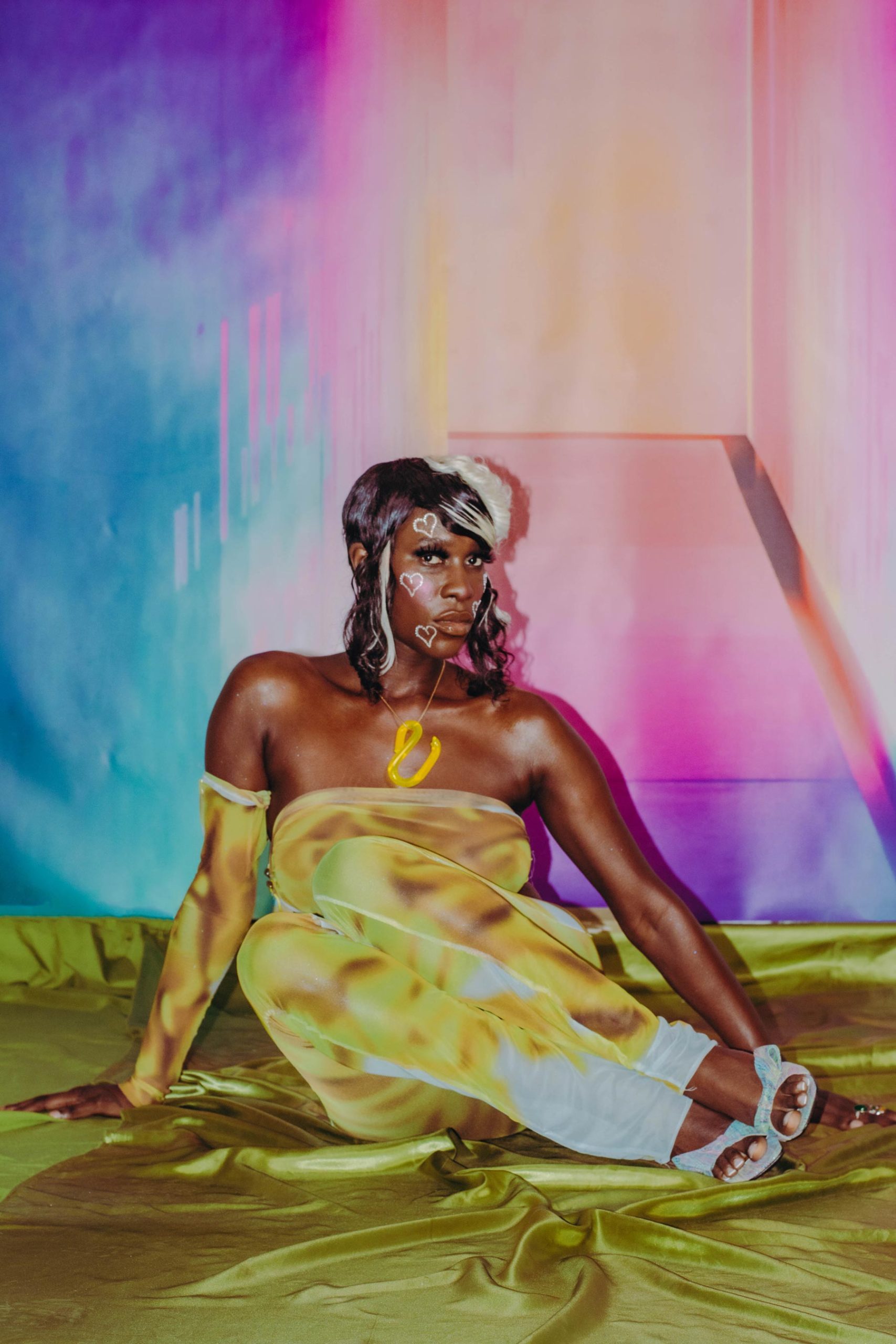
Mesh threepiece & necklace by Louise Jarrige. Rings & shoes stylist’s own.
RASHIDA TAYLOR fashion editor
Rashida Taylor is Fashion Editor of Stillpoint Magazine, a writer, and stylist based in London, encouraged by artistic expressions of the Black experience in all its various forms.
TERNA JOGO photographer
Terna Jogo, also known as TeeJay, is a Nigerian-British photographer. Born in Nigeria, Jogo moved to a small village in Surrey aged three with her mother and two twin siblings. She now works as a fashion editor and photographer in London. Growing up in a conservative and predominantly white area, Jogo looked to fashion publications as sources of inspiration for her love of media and image-making. Noticing a lack of people that looked like her in the media, Jogo was driven to create the representation she would like to see in the world. Her work can be defined as concept-led fashion photography, focusing on amplifying Black talent and their beauty. Terna Jogo regularly creates fashion editorials for GUAP Magazine, and has worked with Crack Magazine, Contact, Nike, NCS, and more.
© Copyright for all texts published in Stillpoint Magazine are held by the authors thereof, and for all visual artworks by the visual artists thereof, effective from the year of publication. Stillpoint Magazine holds copyright to all additional images, branding, design and supplementary texts across stillpointmag.org as well as in additional social media profiles, digital platforms and print materials. All rights reserved.
